Buff Orpington chickens have become a popular breed known for their friendly disposition and egg-laying abilities. Originally from England, the Buff Orpington is a dual-purpose breed used for meat and egg production.
We will cover the interesting history of the Buff Orpington and its standard appearance and temperament. We will also discuss the breed’s egg-laying abilities, health concerns, and life expectancy.
Finally, we will answer the question, “Is the Buff Orpington right for backyard chicken keepers?”
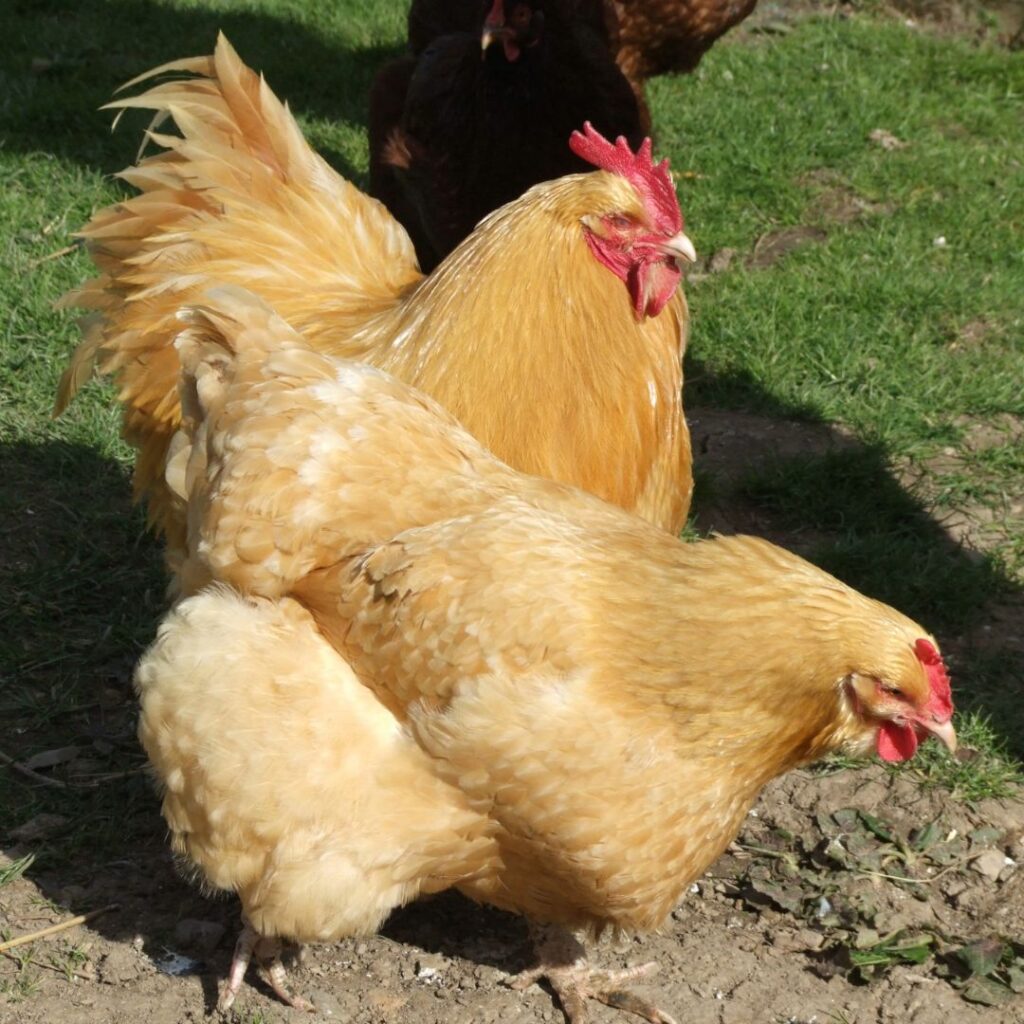
The History of Buff Orpingtons
The Orpington’s History
In the late 1880s, the breeding and keeping of exotic birds were once a source of entertainment. With the end of the ‘chicken craze’ era, people started raising more practical birds.
William Cook from Orpington in Kent County, England, took a great interest in this new trend and began his poultry breeding career.
He was interested in the possibility of breeding poultry for both the purposes of meat and egg production.
Wm. Cook began by selecting birds that were good layers and of suitable meal size. He initially used the three breeds Minorca, Langshan, and Barred (Plymouth) Rocks.
In 1886 he revealed the Black Orpingtons – which became a successful and popular breed in England.
The next color to be revealed was Buff, the favorite color of Orpington chickens. Also following along were the White and Blue colors of the bird.
When Wm. Cook revealed his birds to the general public, they quickly became the most popular breed in the U.K. Within ten years, it was exported to other countries and thus landed here in the U.S.
There was great interest from the public in these golden beauties. Before long, farmers and poultry enthusiasts were greatly interested in adding this dual-purpose bird to their flocks.
Buff Orpington: The Birth of a Breed
These chickens are heritage chickens that many people favor.
The original ‘Black Orpington’ was created from the Langshan, Barred (Plymouth) Rock, and Minorca. Not a single one of those breeds is “buff.”
Buff Orpingtons as we know them today were developed by Wm. Cook, using Buff Cochins, Dorkings, and Gold-Spangled Hamburgs.
There is the belief that the Lincolnshire Buff (an old breed) was used in developing this color. William Cook denied this, so still today, there is no concrete record of this being true.
This way of breeding was (and still is) considered unusual to combine many distinct breeds to create a variety of colors and still be identified under the same breed name (Orpington).

Buff Orpington Breed Standard and Appearance
The Buff Orpington is a large chicken, with roosters weighing around 9 – 10 pounds and hens around 7 – 8 pounds.
They are characterized by their buff-colored (golden color) feathers, where they get their name. They have thick, fluffy feathers that help keep them warm in cold weather.
All Orpington chickens have a muscular physique and a broad body with short backs and legs.
More pronounced in the roosters are their U-shaped silhouette.
Buff Orpingtons have upright, medium-sized single combs, medium-sized wattles, and red earlobes.
What Baby Buff Orpington Chicks Look Like
Baby Buff Orpingtons are born with yellowish-gold feathers, which darken to a buff color as they mature.

Buff Orpington Hens; Egg Production
Buff Orpington hens are known for egg laying ability. They lay slightly less than other popular egg-laying breeds such as the Rhode Island Red or the Leghorn.
When do they start laying eggs?
Like most large chicken breeds, the Buff Orpington hen starts laying around 5-6 months. If you get your chicks early in the spring, you may be lucky enough to get a good handful of eggs before they slow down for winter’s long nights.
What color and size eggs are Buff Orpington Eggs?
Orpingtons lay light to medium brown colored eggs.
They consistently lay medium to large brown eggs throughout the spring and summer.
How many eggs do Buff Orpingtons Lay?
The Buff Orpington hen typically lays around 200 -280 eggs yearly.
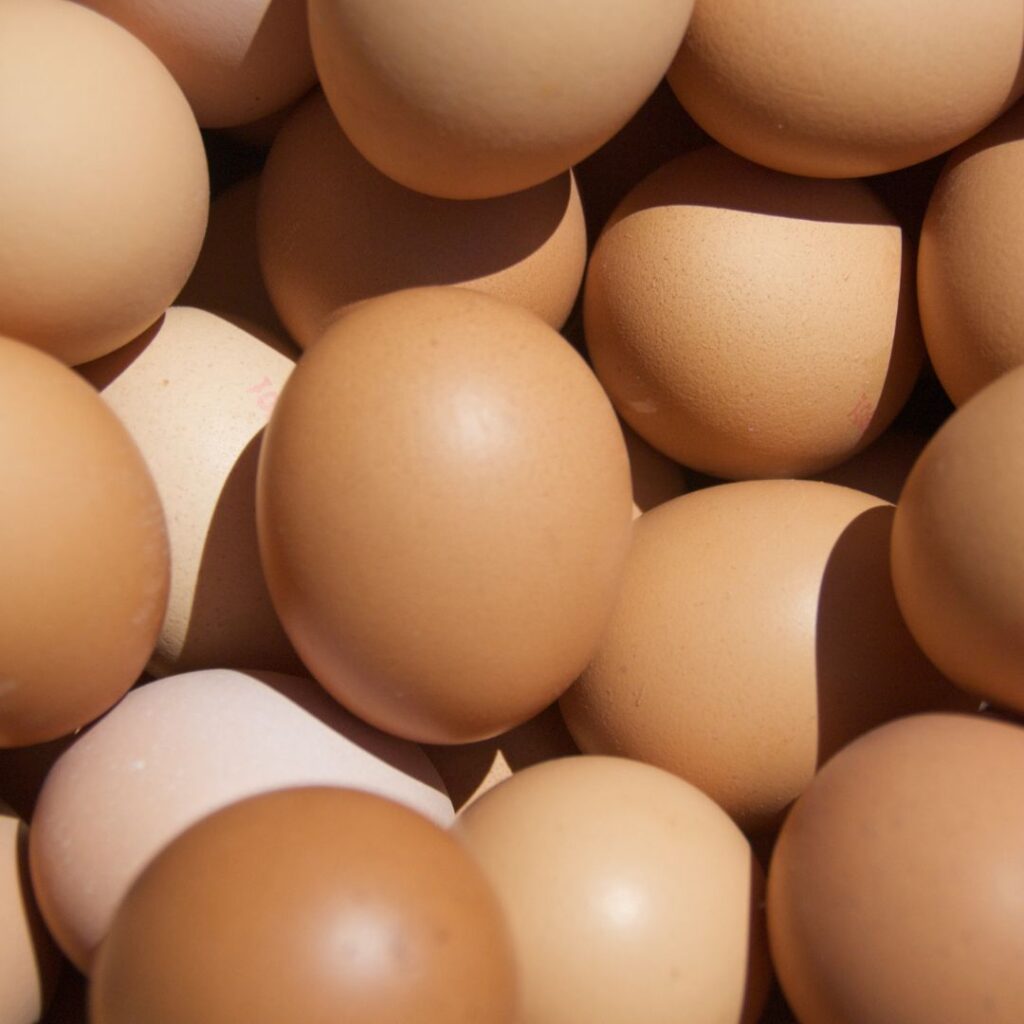
Meat Bird
The Buff Orpingtons are good meat production birds as well as egg layers. You could bring a Rooster to market around 22 weeks.
Buff Orpington Chicken Temperament and Disposition of The Orpington Breed
One of the most appealing things about the Buff Orpington breed is their gentle and docile nature. They are one of the most friendly chicken breeds and get along well with humans and other animals. This makes them an excellent choice for backyard chicken owners who want non-aggressive chickens that will not cause any trouble.
Are the Buff Orpingtons Friendly Birds?
Yes, Buff Orpingtons are very friendly birds. They enjoy being around humans and animals and do not mind being handled or petted, which makes them excellent family pets.
However, because of their peaceful nature, they can be a target of more aggressive birds in your flock (aka, the bullies). Be sure to provide plenty of space for all your flock to move about and not feel cramped can help with this.
Also, allowing birds to free-range will let the more assertive chickens burn some energy during the day.
Are Buff Orpington Roosters Aggressive?
The Buff Orpington rooster is a backyard or hobby farm favorite because they are docile and have friendly personalities.
However, a rooster is still a rooster. Roosters are more observant than hens. Buff Orpington roosters, like any rooster, are more aggressive than hens. A rooster’s responsibility in the flock is to watch over and protect.
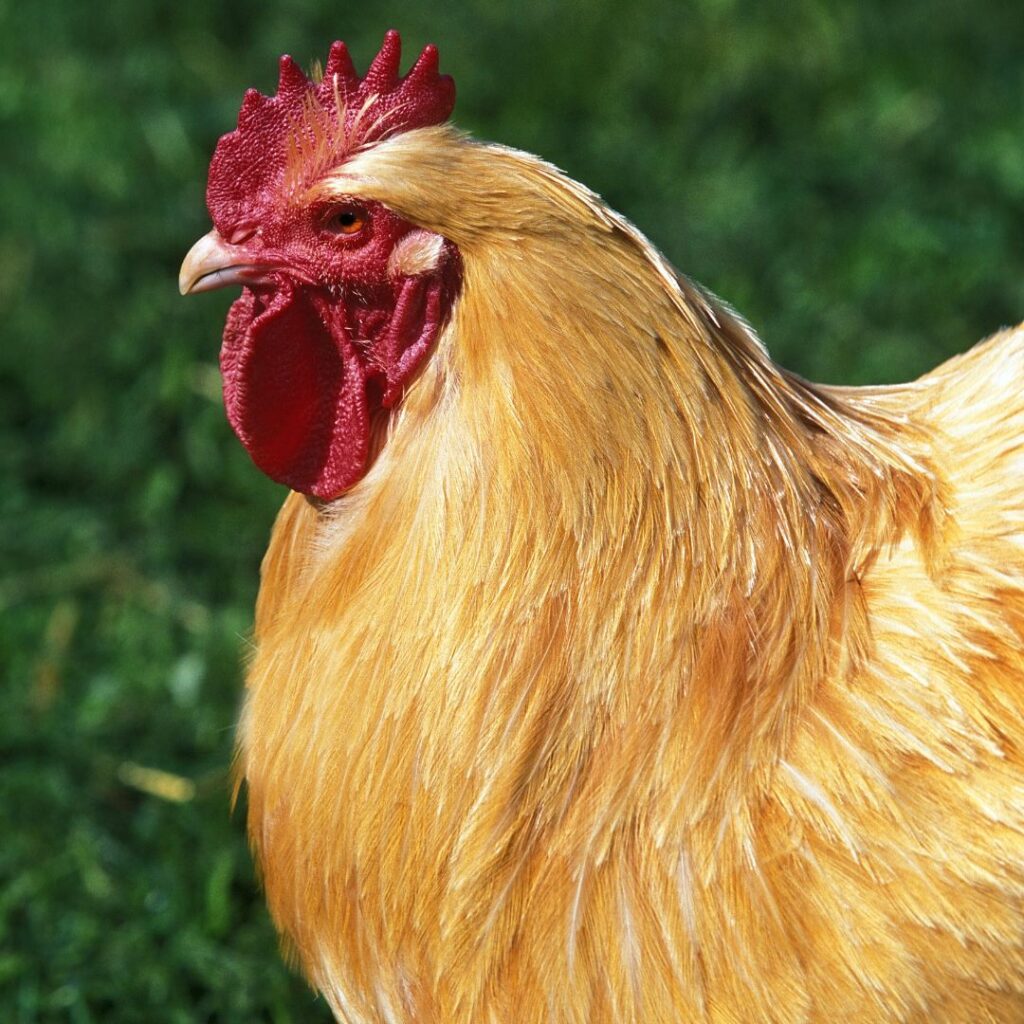
Breed Variations of the Orpington Chickens
The Buff Orpington is one of many Orpington chicken breeds.
The American Poultry Association recognizes the more well-known colors. Those are the Black, Blue, Buff, and White.
Black Orpington: The Black Orpington is the first of the Orpingtons created. They were introduced in the early 1880s and became very popular.
Blue Orpington: The Blue Orpington came on the scene in 1910. Although this variation was not successful early on, it’s a popular color today.
Buff Orpington: The Buff is the second variety of Orpington that was created. They are the most popular of all the Orpington Variations.
White Orpington: Godfrey Shaw first developed and introduced the White Orpingtons. Earlier, they were called Albion’s; today, they are called White Orpingtons.
Other variations not yet recognized by the APA are the Chocolate Orpington chicken, Lavendar Orpington chicken, Splash Orpington chicken, Mottled Orpington chicken, Saphire Gem chicken, Lemon Cuckoo chicken, and Mauve Orpington chicken.
Of note: Recognized by the American Poultry Association and the American Bantam Association are the Bantam sized in the same variations (Black, Blue, Buff, and White).
The Chicken Coop Size for Buff Orpington Chickens
When it comes to chicken coops, size matters, a chicken coop that’s too small can lead to overcrowding, creating health and behavioral problems for your chickens. A chicken coop that’s too big can be a waste of space and money. So, what’s the perfect chicken coop size for Buff Orpington Chickens?
Space
As a rule, you should allow about 4-6 square feet of space per chicken. If you have 4 Buff Orpingtons, your chicken coop should be at least 16-24 square feet in size. However, it’s always better to err on the side of caution and give your chickens a little more space than they strictly need. After all, you want your chickens to be happy and healthy, not cramped and stressed.
Keep in mind that Orpington Chickens are not very active when free ranging. Their need for indoor confinement space should be roomy enough to allow some leg stretching and a bit of indoor socializing.
Perch
In addition to floor space, your chickens will also need access to perches. Perches are an important part of a chicken coop because they give your chickens a place to sleep and rest off the ground. A good rule of thumb is to provide one perch for every chicken.
The perch should be around eight to ten inches long so that your large Orpington chicken has enough room. The perch must be stable, so the chicken doesn’t fall off it.
Being a larger bird, you will want the perch only to sit fifteen to 20 inches off the ground so your chickens don’t injure themselves when leaving the perch.
Nesting boxes
Nesting boxes are another essential consideration when it comes to chicken coops. These boxes give your hens a place to lay their eggs in privacy and without fear of predators. You should provide one nesting box for each 4-5 hens in your flock. So, if you have 4 Buff Orpingtons, you’ll need at least one nesting box in their coop.
Feeders and Waterers
Last but not least, don’t forget about feeders and waterers. Your chickens will need access to food and water at all times, so it’s essential to ensure that their coop is equipped with enough feeders and waterers to meet their needs.
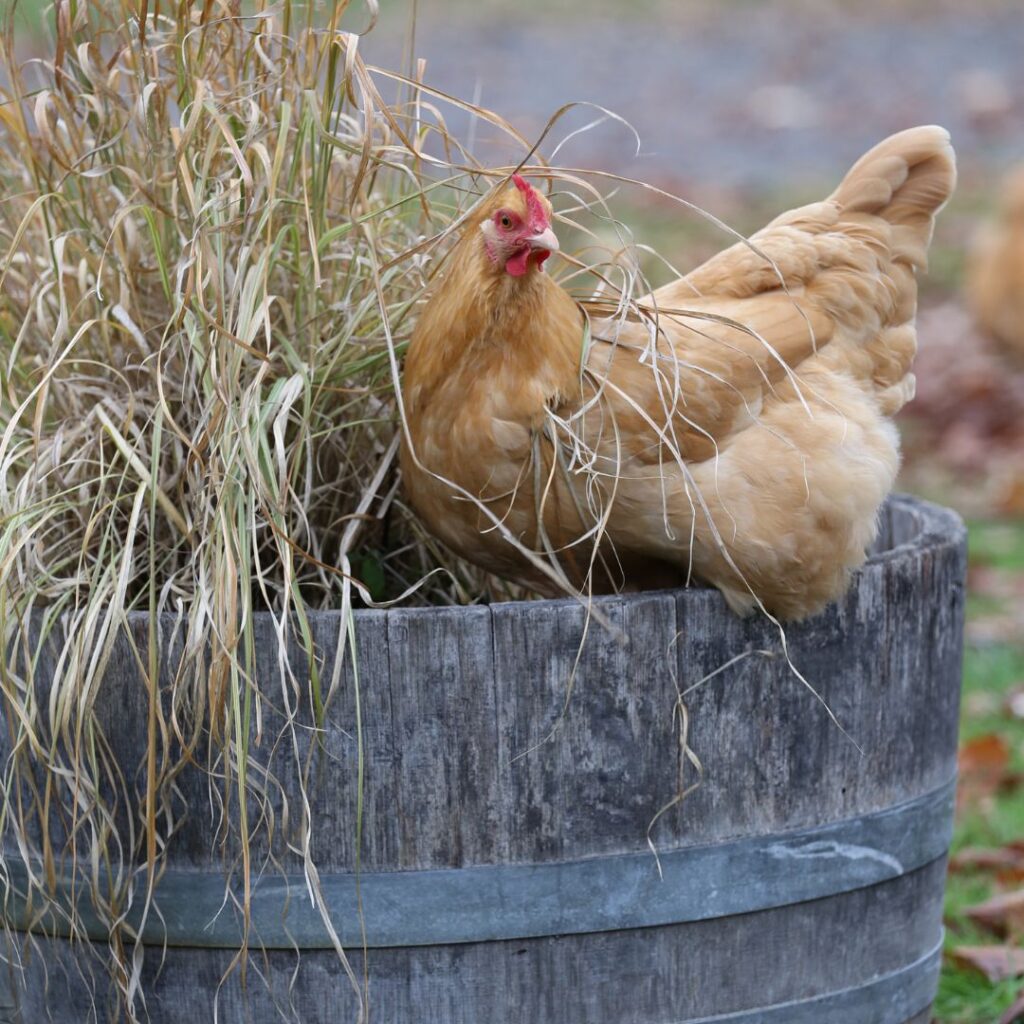
The Chicken Run For Your Buff Orpingtons
Any good chicken keeper knows their chickens need a spacious, safe outdoor area to roam and explore. This will also help reduce ‘in flock’ stress, encourage healthy exercise, and make for happier chickens.
Space
Space is the first thing you’ll need to consider when planning your chicken run. A good rule of thumb is to allow at least 10 square feet of space per chicken. So, if you have 4 Buff Orpingtons, you’ll need a minimum of 40 square feet of space for your chicken run. However, the more space you can provide, the better.
Shelter from elements
Next, you’ll need to ensure that your chicken run provides shelter from the elements. This means ensuring that there is some roof or tarp over the chicken run to protect your chickens from the hot sun, rain, and snow.
Fencing height
The height of your fence is also something you need to consider. A good rule is ensuring that your fence is at least 6 feet high. This fencing will deter predators such as foxes or coyotes from getting into the chicken run.
It’s a good idea to bury the bottom few feet of the fence underground to prevent digging predators from getting in that way.
Some backyard chicken owners also enclose the top of runs with hardware cloth to prevent overhead predators like hawks from entering the area.
Remember to constantly check for holes or gaps in the fencing, keeping the run enclosure in good repair at all times.
Dust Bath
Lastly, don’t forget to include a dust bath in your chicken run. Dust bathing is a vital part of a chicken’s grooming routine, and it helps them stay healthy and parasite-free. A simple kiddie pool filled with sand or dirt will do the trick.
Free-Range and Foraging For Buff Orpingtons
The Buff Orpingtons are not known for their free-range skills. They prefer to stay close to home. They’re not strong foragers, although they will still help with some insects around the yard.
While you can still allow them to free-range, they’re not ‘fast’ or flighty birds and can be more susceptible to predators.
Are Buff Orpington Chickens Noisy?
Noisy chickens can be a nuisance, especially if you live near your neighbors. Luckily, Buff Orpingtons are not known for being particularly noisy. They are considered to be reasonably quiet compared to other chicken breeds.
The Roosters, of course, crow and will do so more if their flock is being disturbed. Hens tend to make the most noise as they lay eggs.
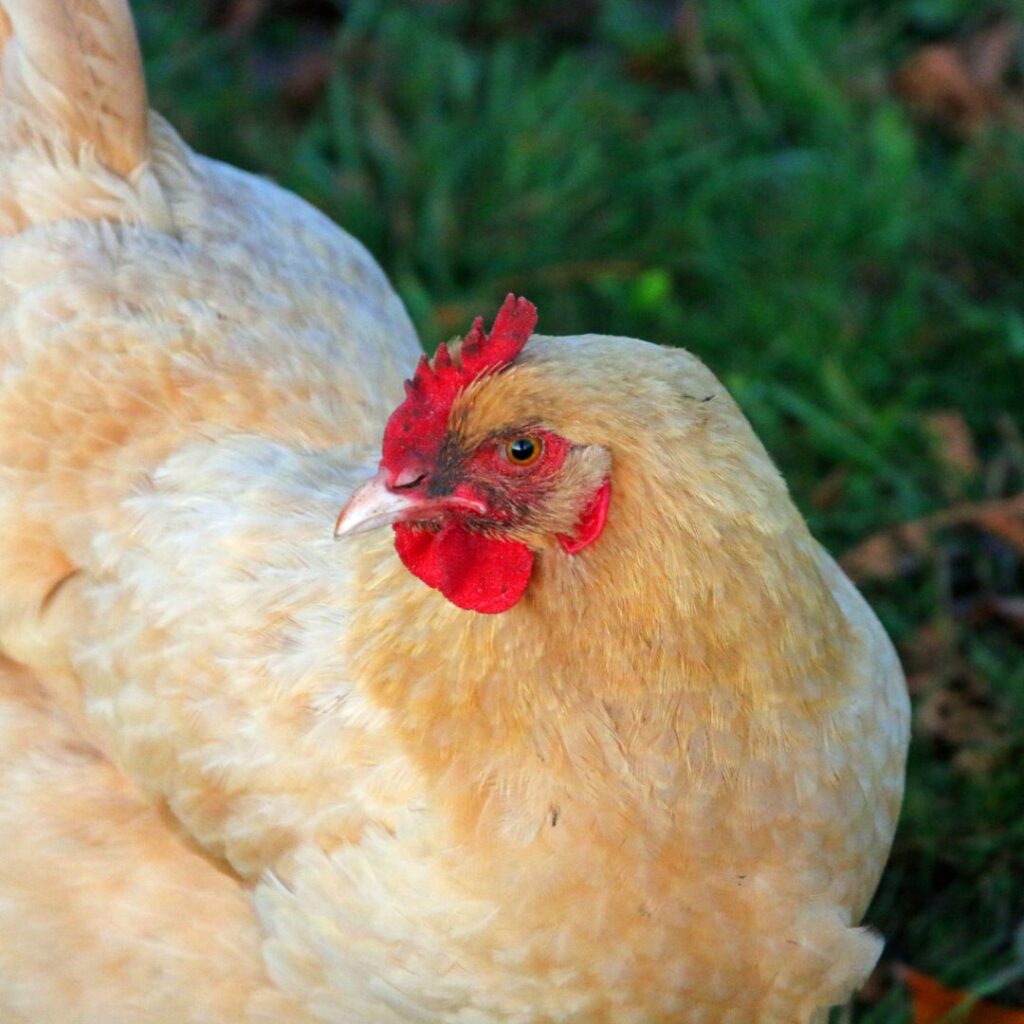
Are the Buff Orpingtons Good Urban (City) Chickens?
Because of their desire to stay close to home, and even preferring enclosed run areas, makes them ideal for smaller yards. Also, docile breeds are less likely to cause concerns to neighbors with children. One of the biggest concerns in city/urban areas with chickens is noise levels. The Buff Orpingtons aren’t noisy compared to other chickens.
All these things make for an ideal chicken breed for urban life while benefiting from excellent egg production.
Are Orpington Chickens Cold Hardy
The Orpington chickens are very cold and hardy. Their fluffy, dense feathers and body mass go a long way to keeping your flock warm. However, like any chicken, you’ll want to be sure you provide certain conditions that will keep them safe and healthy in any harsh weather.

Winter Chicken Coop Prep
Make sure your chicken coop is well-insulated to help keep the heat in and the cold out. A 3-4″ thick layer of straw on the coop floor will help keep your chickens’ feet warm and dry. You can further insulate foundations and outer areas with bales of straw (which can be used in the spring for your garden, etc.). Some people wrap the windy side of the coop with a plastic tarp or tar paper.
Proper ventilation is essential to preventing condensation and dampness in the coop.
Take a winter walk around inside and outside your coop, check for areas where the light peeks through the chicken coop walls, and patch up before the problem becomes a hazard to your birds.
Winter Waterers
Be sure to supply your chickens with fresh, unfrozen water at all times. You can make a point to change the water at least twice a day or consider investing in a heated container (being sure it’s enough for the entire flock and safely powered.
Frostbite
They can withstand cold temperatures well, but their combs are susceptible to frostbite. Frostbite is incredibly painful and can lead to the unnecessary death of your Orpington chicken. Adding a tiny amount of petroleum jelly to their combs and waddles can prevent frostbite with your flock.
As the winter weather approaches, it’s important to ensure your chicken coop is ready to withstand the elements. Taking a few proactive steps can help ensure your chickens stay warm and dry all winter.
Orpington Chickens Love Treats When It’s Cold Out
Are you meal-prepping or cooking a warm soup or stew for your family? Put those scraps aside, cook them up, mash them together, and serve to your Orpington Chickens. Nothing says love like a homemade meal. Oatmeal is another great hardy treat for cold days. If you have some older fruits or dried fruits you can part with, add those in and make for a delicious (not just for breakfast) treat flock.
When raising chickens at home, it’s not so hard to add an extra bowl to bring out to the feathered friends who provide you with farm-fresh eggs the rest of the year.
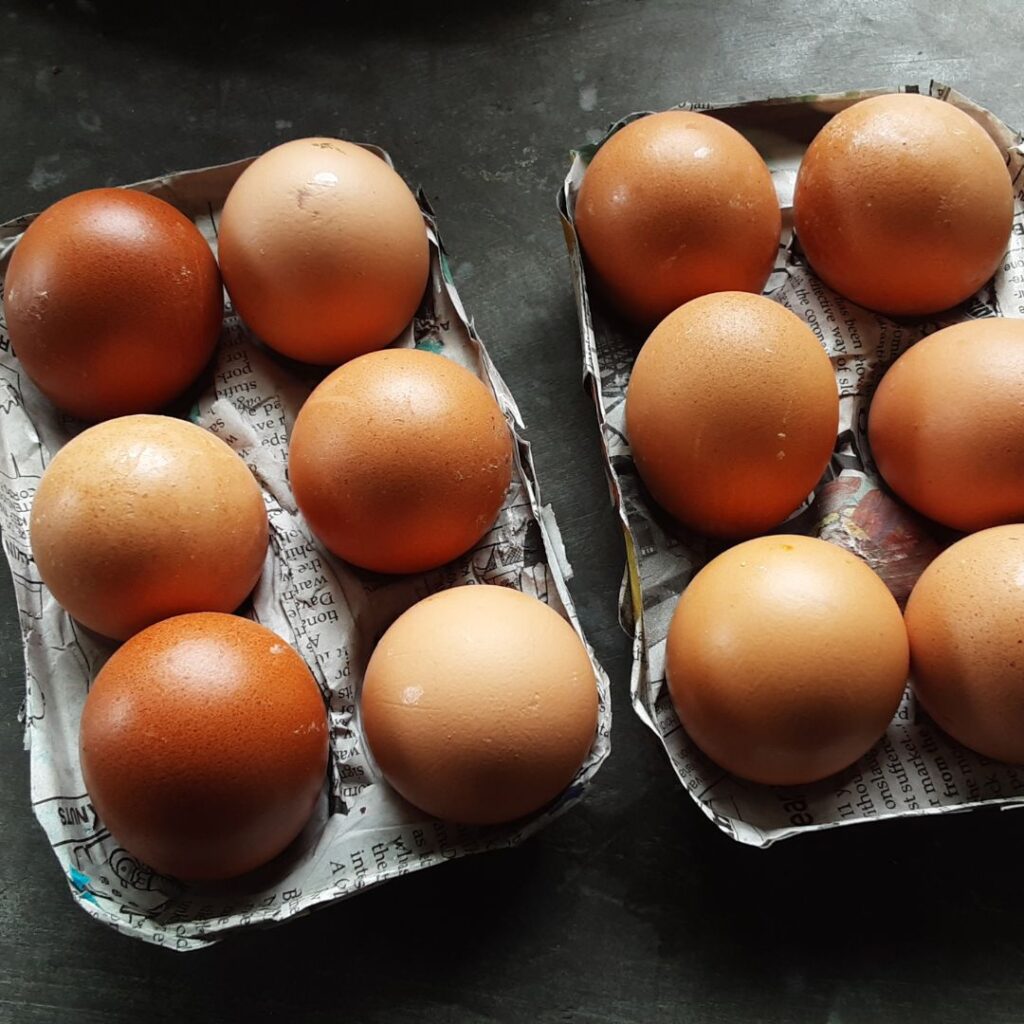
Are Orpington Chickens Heat Tolerant
Like people, chickens can suffer in hot weather if they don’t take the right precautions. Orpington chickens are a popular breed of chicken known for being heat tolerant; however, there are still some things you should do to make sure your chickens stay cool, comfortable, and safe during the hot summer months.
Here are some things you can do to ensure your Orpington chickens stay cool and comfortable all summer long.
Hot Weather Coop Prep
When the thermometer starts to rise, you can do a few things to prepare your coop for the hot weather. First, make sure your chicken coop is well-ventilated. Good ventilation will help to keep the coop cooler and will also help to prevent any build-up of heat or humidity.
You can also add screens to your doors, and if you have windows, those too. Screens also allow you to keep doors or windows ajar for cooler air when the sun sets.
Some people will put on a fan on some hottest days to blow out the hot air; use caution with any electrical wires near your chickens.
Clean your coop frequently (once a week). Droppings from your chickens can turn into bacteria quickly in the heat, not to mention flies and the heat generated from the droppings.
Waterers in Hot Weather
The most important thing you need to do every day to keep your chickens cool in hot weather is always to ensure they have plenty of cool, fresh, and clean water to drink. Clipping a small shade cloth over the top of their waterer will help keep the water cooler and prevent evaporation.
Adding ice cubes to their water will also help to keep the water cool throughout the day.
Treats For Hot Weather Days
Fill a container with water, drop some fruit and vegetable scraps and freeze. Serve up to your Orpington chickens on a warm summer day and watch them a feast. Fresh or frozen melons, including the rinds, are filled with hydration and nutrition for your flock.
Other Hot Weather Considerations for Orpington chickens
Being a larger breed, the Buff Orpingtons and all the Orpington chickens can heat up easier than smaller-built birds. Keeping shady areas in the run is a great way to help them all stay comfortable.
Also, when the ground gets hot in the run, you can toss grass clippings (untreated) or dried leaves from the previous autumn into the run area. Spray some water on the clippings and instant cool down for scratching.
Life Expectancy of the Buff Orpington
The average life expectancy of a healthy Buff Orpington is around 8 to 10 years. However, there have been reports of some Buff Orpingtons living for more than 15 years!
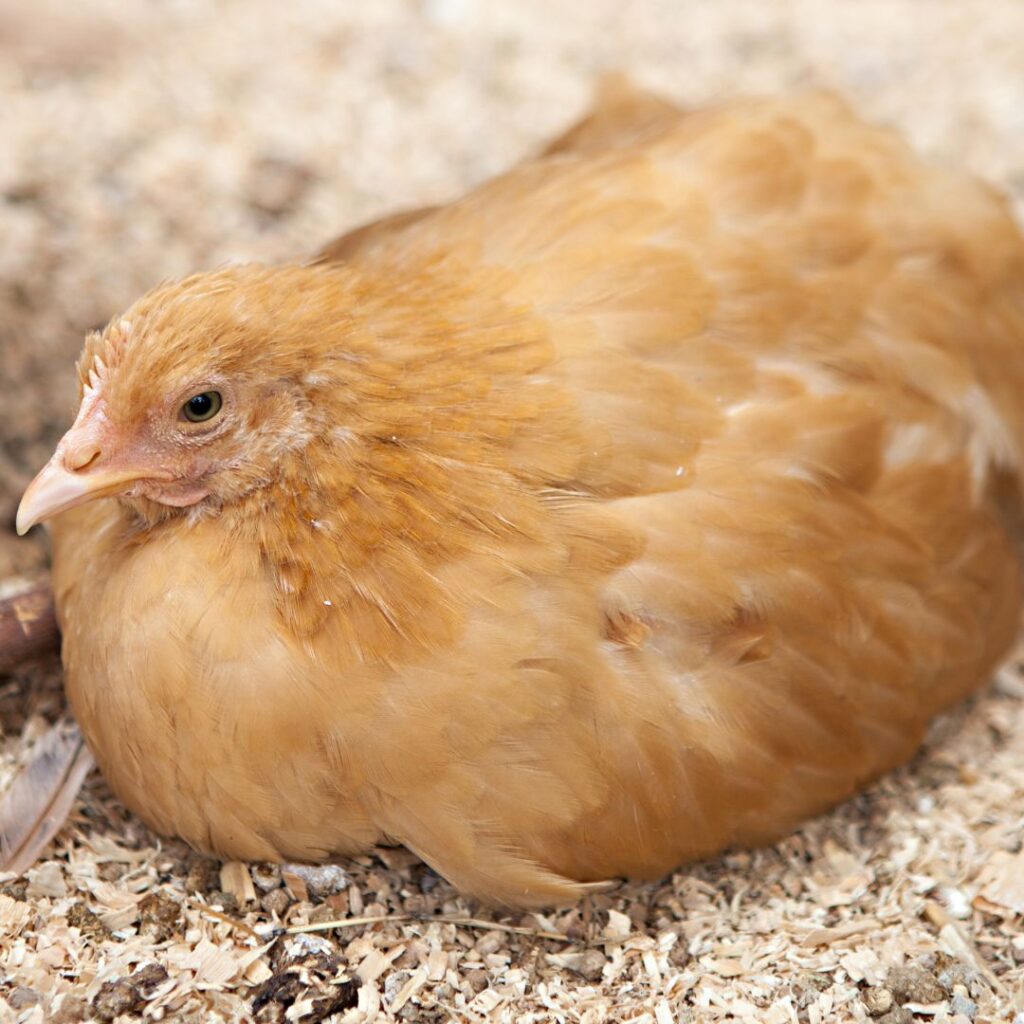
Is The Buff Orpington Right For Backyard Chicken Keepers?
They have beautiful buff-colored feathers and make excellent backyard chickens because they’re docile birds, a quiet, gentle breed with beautiful fluffy feathers, and easy to handle. Buff Orpingtons are often referred to as the “Goldendoodle” of the chicken world because they’re so friendly and low-maintenance.
No matter your reasons for wanting to keep chickens, the Buff Orpington is a perfect breed for people who want to raise backyard chickens. They’re low-maintenance and great egg layers – what more could you ask for? So if you’re looking for a breed of chicken that’s easy to care for and provides hours of enjoyment, look no further than one of our favorite heritage breeds, the Buff Orpington.

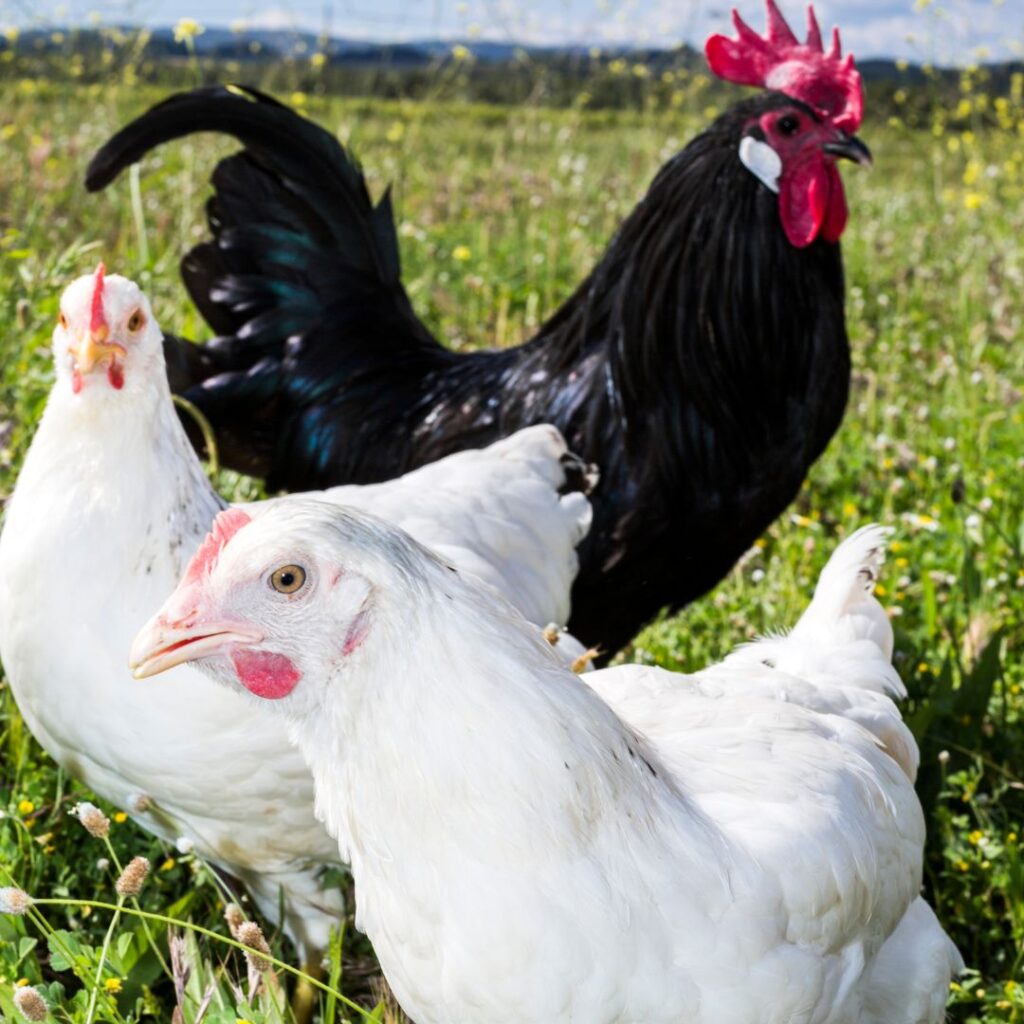


Pingback: Cornish Chickens: A sweet Heritage Breed - Gilmore's
Pingback: Raising Backyard Chickens; Tips For Beginners - Gilmore's
Pingback: 18 Cold Hardy Chicken Breeds For Harsh Winters - Gilmore's
Pingback: How Many Eggs Do Chickens Lay? This May Surprise You! - Gilmore's